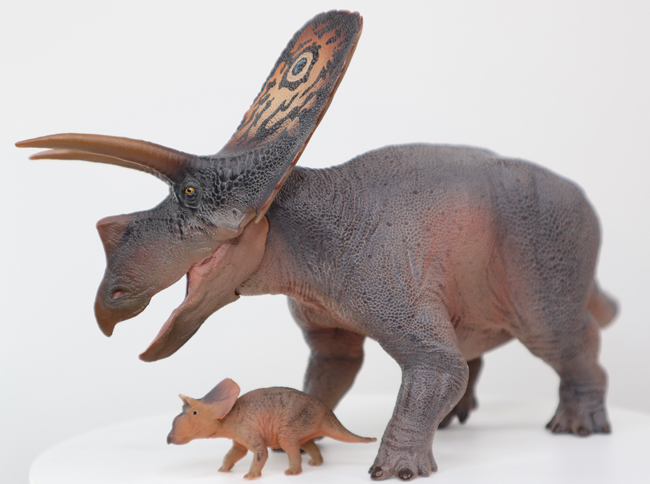Dinosaur Teaching Topics – How to Name a Dinosaur
Brontomerus mcintoshi Research Helps School Pupils Get to Grips with Palaeontology
Pupils at Sacred Heart Primary school, Blackburn, have been travelling back in time to visit the age of Dinosaurs in a range of teaching activities. The budding young palaeontologists in Miss De Piano’s Year Three class, were given the chance to name their very own prehistoric animal.
Students had been getting to grips with fearsome creatures such as Tyrannosaurus rex and Velociraptors as well as marvelling at peaceful plant eating giants such as the armoured Stegosaurus and the huge Diplodocus. This was part of the school’s science week events organised, to coincide with National Science and Engineering Week, by one of the school’s teachers – Mrs Smith. They were given the chance to look at some of the research carried out on a new species of long-necked dinosaur – Brontomerus mcintoshi. This dinosaur, fossils of which have been found in Utah, (United States), has only just been formally named and scientifically described.
In total, fragmentary remains of two dinosaurs were discovered in the same quarry, one adult and a much smaller juvenile. The name Brontomerus means “thunder thighs”, in recognition of an enlarged anterior portion of hip-bone associated with the remains of the smaller specimen. Scientists have suggested that the expanded hip bone served as an anchor for large leg muscles, giving this particular dinosaur very strong legs.
The Age of Dinosaurs
For the young scientists in Miss De Piano’s class the challenge set by Everything Dinosaur was to consider how animals change as they get older. If animals change as they grow, could they come up with an alternative name for Brontomerus once they had reviewed the fossil evidence?
The class was split into two groups for this part of the dinosaur teaching session, each group was given the task of answering questions on chickens, however, one group was asked to describe a chick, whilst the other portion of the class described an adult bird. Although each group was asked the same questions, it soon became clear to the pupils that a chick looks very different when compared to an older bird.
Based on this, and with an overview of the fossil evidence of Brontomerus provided by Everything Dinosaur, the class set about creating their own names for this type of dinosaur. All part of the fun when it comes to teaching about dinosaurs in school.
Organisms Change as they Grow

The 1:35 scale PNSO Torosaurus models (Aubrey and Dabei). The adult Torosaurus figure has an articulated lower jaw. the adult Torosaurus is very different in appearance than the juvenile. Picture credit: Everything Dinosaur.
Picture Credit: Everything Dinosaur
The Torosaurus in the picture (above) is from the PNSO range of prehistoric animal figures.
To view this range: PNSO Age of Dinosaurs Figures.
The chicken was used in this dinosaur workshop to illustrate issues related to ontogeny (how organisms grow), helpful in explaining to the students differences in the fossil skeleton of the adult compared to the juvenile dinosaur.
The pupils worked on the theory that, if this plant-eating dinosaur really had very strong limbs, perhaps it could rear up onto its hind legs to help it to graze on parts of trees that other dinosaurs could not reach, just like a Gerenuk antelope in Africa does today.
A wide variety of alternative names were thought up, a few examples from the clever pupils were Two-legosaurus, Standuposaurus, Treeasaurus, Anteloposaurus and our personal favourite Vegesaurus.
It was a real pleasure visiting Sacred Heart Primary and helping the children with their dinosaur experiments and showing some of our fossils. Our thanks to all the students, teaching assistants and teachers who helped make the day so special.

